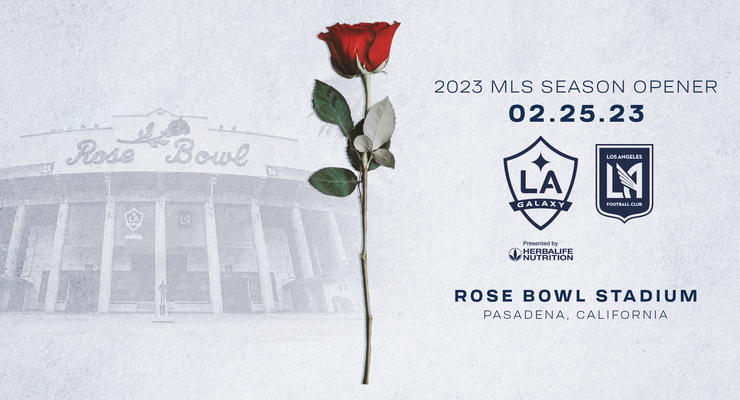While the United States may be lacking in iconic soccer stadiums, the Rose Bowl has a resume that stacks up against many of the world’s signature venues.
It’s become more or less a cliche to refer to a stadium as a cathedral. But you can’t ignore the religious aspects that come with these concrete monoliths of sport.
Countless fanatics making pilgrimages, some of which range in the thousand-mile variety. Ritualistic traditions whose practices are unwritten in nature yet widely known by those in attendance. And of course, the history — which applies to fewer and fewer stadiums these days — upon which legacies are built, life-long connections are made, and stories that become less factual with time are told (I was there when…). So no matter how cliche it is, it’s hard not to equate sports with religion.
This is especially true in the world of soccer. Stadiums like Anfield, La Bombonera, and the San Siro have become larger than their already massive capacities, and are more than just a venue for iconic clubs.
In the United States, however, where the beautiful game takes a back seat to American football, basketball, and even baseball, “cathedral” like stadiums are few and far between. But if you were to select the most iconic soccer venue in the country, the answer is clear: the Rose Bowl.
It’s only fitting that the stadium with the deepest soccer history in the U.S. was constructed for another sport. But if you take a look at the Rose Bowl’s resume, not many other soccer stadiums in the world can claim some of its accomplishments.
It’s hosted two World Cup finals, once in 1994 and once in 1999, both to crowds over 90,000. The only other stadiums in the world that have hosted multiple World Cup finals, men’s or women’s, are the Azteca, the Maracana, and Sweden’s Rasunda Stadium. It also hosted the 1984 Olympic gold medal match, which makes it the only stadium to have hosted both a men’s and women’s World Cup final in addition to an Olympic final. That’s pretty elite company.

It was recently announced that LAFC and LA Galaxy will open the 2023 MLS season at the Rose Bowl in a match that could very well set an MLS attendance record, so in that spirit, let’s take a look back at the Rose Bowl’s storied history.
Constructed in 1922, the Rose Bowl was initially built for college football and has been the host of its eponymous bowl game since 1923. It’s set to celebrate the 100-year anniversary of its first game later this month.
Through the NASL, soccer entered the fray in the late 1960s and into the ‘70s, with the short-lived Los Angeles Wolves and the iconic Los Angeles Aztecs, who featured the likes of George Best and Johan Cruyff.
The Aztecs would only play at the Rose Bowl in 1978 and 1979, and the next major game the stadium would host was the 1984 Olympic gold medal game between France and Brazil, whose 101,799 attendance broke the record for a soccer game in the U.S. (That record would go on to be broken by Real Madrid and Manchester United at Michigan Stadium in 2014.)

Ten years later, the U.S. was hosting its first World Cup, and there was nowhere else the final could’ve been. With the San Gabriel Mountains set in the backdrop, a crowd of 94,000-plus braved the 100 degree weather and witnessed Roberto Baggio’s missed penalty that secured a Brazil victory over Italy. Another iconic penalty shootout would occur at the Rose Bowl five years later, and Brandi Chastain’s celebration would go on to be memorialized via statue outside of the stadium.
Another notable ‘90s match at the Rose Bowl was the inaugural LA Galaxy home match, which featured a crowd of 69,255. The Galaxy would play its home games in Pasadena until 2002, when it moved to what’s now known as the Dignity Health Sports Park.
Though it’s no longer the permanent home to a soccer team, the Rose Bowl has featured numerous important soccer matches throughout the 21st century, including the 2002 and 2011 Gold Cup finals and a handful of U.S. men’s and women’s national team games. Most recently, Juventus and Real Madrid took to the pitch in front of 93,702 fans as part of the inaugural Soccer Champions Tour.
However, it looks as if the days of the Rose Bowl being Los Angeles’ premier large scale soccer venue are coming to an end. Despite LA winning a bid to be a host city for the 2026 World Cup, it was SoFi Stadium that was selected as the venue over the Rose Bowl. Last August, SoFi hosted its first ever soccer matches, a Leagues Cup doubleheader between LA Galaxy and Chivas, and LAFC and Club America to a crowd of 71,189.
Old grounds making their ways for new ones in soccer has become an increasingly common trend over the past 20 years. And while modernized stadiums oftentimes can provide a more comfortable viewing experience, there’s something about the personality of a historic and more traditional ground that makes it special.
So it’s unfortunately not very surprising that a stadium with such a historic importance has been pushed out in favor of a shiny new toy with swanky box seating and premium food options. But while the Rose Bowl does feel outdated compared to SoFi and even the Banc of California Stadium, you can always add a new scoreboard or refurbish the seats. You can’t buy history.








